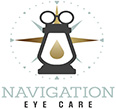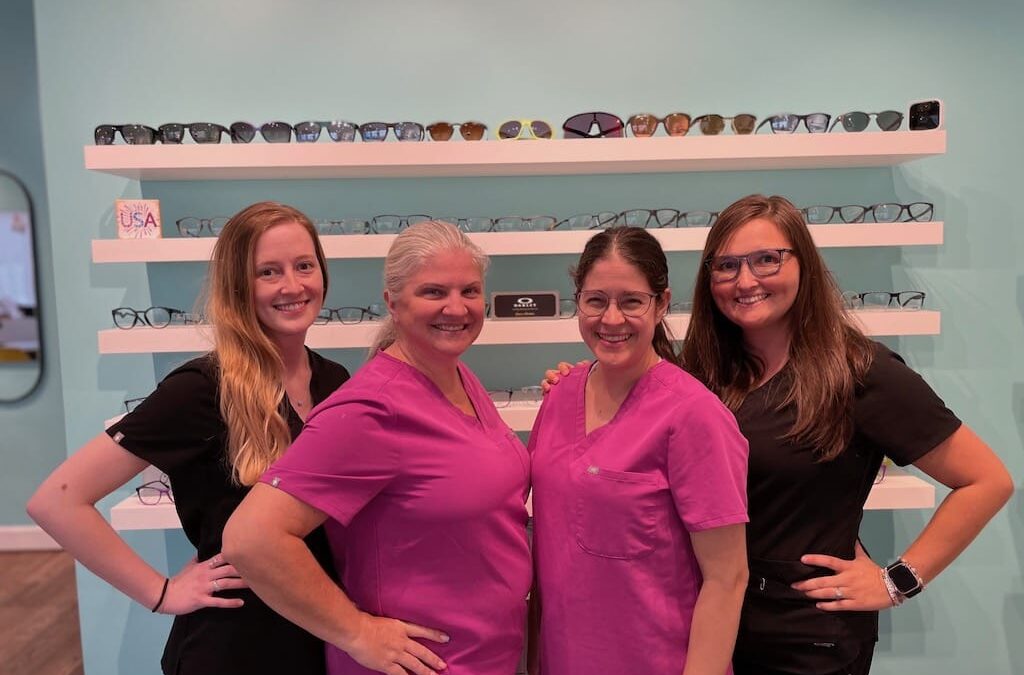The Myopia Mystery: Understanding and Managing Nearsightedness in Kids
Nearsightedness, or myopia, is a common vision problem that affects millions of children worldwide. As parents, understanding and managing myopia in kids can be a perplexing challenge. Fortunately, there is a wealth of knowledge and guidance available to help ensure your child’s eyesight remains healthy and strong. In this blog post, we’ll delve into the myopia mystery, exploring the causes, signs, and practical ways to manage this condition in children.
What is Myopia?
Myopia is a condition where distant objects appear blurry, while close-up objects can be seen clearly. It occurs when the eyeball is slightly too long or the cornea is too curved. This causes light rays to focus in front of the retina, rather than directly on it. The result? Poor distance vision.
The Myopia Epidemic
In recent years, there has been a significant increase in myopia cases among children. This has sparked concern among parents, educators, and healthcare professionals. The exact cause of this myopia epidemic is multifactorial, with genetics, environmental factors, and lifestyle habits all playing a role.
Understanding the Causes
Genetics: Family history can significantly increase a child’s risk of developing myopia. If one or both parents have myopia, the likelihood of their child being nearsighted increases.
Environmental Factors: Spending too much time indoors and insufficient exposure to natural light can contribute to myopia development. Outdoor activities and natural light exposure have been shown to reduce the risk of myopia.
Lifestyle Habits: The excessive use of digital devices and near work, such as reading and studying for extended periods, can strain the eyes and increase the risk of myopia. Encouraging your child to take breaks and spend time outdoors is essential.
Signs of Myopia in Kids
Recognizing myopia in children is crucial for early intervention. Common signs include:
- Squinting: If your child frequently squints, especially when trying to see distant objects, it may be a sign of myopia.
- Sitting Close to the TV or Screen: Kids with myopia often sit very close to the television or computer screen to see clearly.
- Frequent Eye Rubbing: If your child rubs their eyes often, it could indicate eye strain, a common myopia symptom.
- Difficulty Seeing the Board at School: Myopic children may struggle to see what’s written on the classroom board.
Managing Myopia in Kids
When it comes to managing myopia in children, early intervention is key. If you’re in Chesapeake, VA, Optometrist Chesapeake VA at Navigation Eye Care can provide you with the guidance and support you need. Navigation Eye Care, the leading eye care provider in the area, offers comprehensive solutions for managing myopia in kids.
Regular Eye Exams: Scheduling regular eye exams with Optometrist Chesapeake VA that many parents recommend is essential. These exams can help detect myopia early and ensure your child’s vision is monitored closely.
MiSight: MiSight is a a non-invasive treatment option offered by Navigation Eye Care. This involves using special contact lenses that is FDA approved and has been show to slow the progression of myopia.
Lifestyle Modifications: The team at Navigation Eye Care can provide guidance on lifestyle changes, such as outdoor activities and digital device usage, to help slow the progression of myopia in your child.
Understanding and managing myopia in children is a critical part of ensuring their visual health. Genetics, environmental factors, and lifestyle habits all contribute to this condition. If you’re in Chesapeake, VA or in the greater Hampton Roads area, schedule an appointment with Optometrist Chesapeake VA at Navigation Eye Care where you can receive the expertise and support you need. Regular eye exams, MiSight, and lifestyle modifications can help your child maintain healthy vision and prevent the myopia mystery from becoming a vision crisis.
Eye Safety in Youth Sports: Protecting Your Child’s Vision on the Field
Sports are an integral part of a child’s development. They teach discipline, teamwork, and resilience. But as parents, we often focus on physical injuries like sprained ankles and broken bones, overlooking one crucial aspect: eye safety. Vision is a precious gift, and it’s essential to ensure your child’s eyes are protected while they’re out on the field.
The Importance of Eye Safety
Eye injuries can happen in any sport, from basketball to baseball, but the risk is often underestimated. According to the American Academy of Ophthalmology, an estimated 100,000 sports-related eye injuries occur each year in the United States. These injuries can lead to vision impairment and even blindness. So, what can you do to safeguard your child’s eyes?
The Role of Protective Gear
When it comes to eye safety in youth sports, protective gear plays a vital role. Ensure your child is equipped with the necessary protective eyewear specific to their sport. This gear is designed to withstand high-impact incidents and significantly reduce the risk of eye injuries. But don’t just buy any pair of sports goggles; it’s crucial to consult with Optometrist Chesapeake VA at Navigation Eye Care, to ensure the gear is a perfect fit for your child’s vision needs.
Regular Eye Exams
Prevention is always better than cure. Regular eye exams are not just for correcting vision problems; they also help identify underlying issues that could make your child more susceptible to eye injuries. Optometrist Chesapeake VA can assess your child’s eye health and provide recommendations on protective eyewear if needed. Navigation Eye Care, with its commitment to top-tier eye care, is a trusted partner for safeguarding your child’s vision.
Educating Your Child
Beyond protective gear and eye exams, educating your child on the importance of eye safety is crucial. Many eye injuries in sports are preventable, and your child should be aware of the risks. Teach them the right techniques and habits, such as not touching their eyes with dirty hands and avoiding sharing towels or water bottles. Instilling these practices early can go a long way in protecting their vision.
First Aid and Immediate Action
Accidents can still happen, no matter how cautious you are. That’s why it’s essential to know the basics of eye injury first aid. If your child sustains an eye injury, you should know how to respond promptly and effectively. Seeking medical attention from Optometrist Chesapeake VA at Navigation Eye Care, is crucial for professional evaluation and treatment.
Eye Safety in Different Sports
Different sports pose varying risks to the eyes. In high-impact sports like hockey and lacrosse, the chances of eye injuries are higher due to fast-moving objects and collisions. In contrast, sports like swimming may expose the eyes to chlorine and other irritants. Understanding the specific risks associated with your child’s chosen sport will help you take appropriate measures to protect their vision.
Your child’s vision is invaluable, and as a parent, it’s your responsibility to ensure their eye safety during youth sports activities. Investing in protective gear, regular eye exams from Optometrist Chesapeake VA at Navigation Eye Care and educating your child about eye safety are crucial steps. Remember, accidents can still occur, so knowing how to respond in case of an eye injury is equally important.
By taking these measures, you can give your child the gift of both a healthy, active lifestyle and the precious gift of clear and unharmed vision. Choose Navigation Eye Care for all your eye care needs and ensure your child’s eyes are in the best hands.

